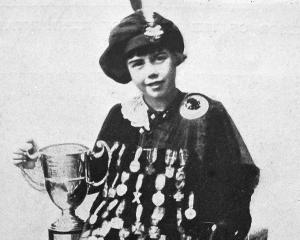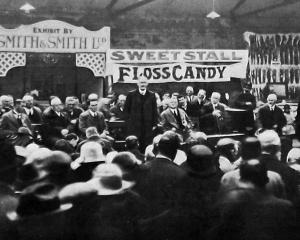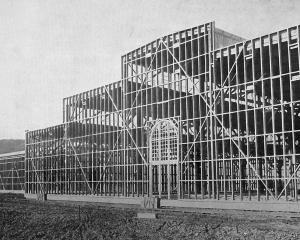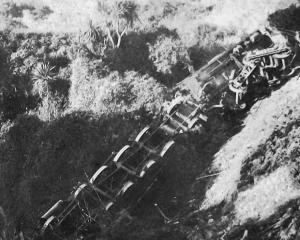The loss of timber was the greatest suffered by anyone, and a good deal of valuable wood was destroyed.
A few sheds and small huts were also wiped out of existence, and a length of tramway belonging to a sawmiller and an odd haystack was burned.
The timber destroyed was the real loss, and it is difficult to estimate its value.
However, it must be considerable.
The stacks of sawn timber that were about the sawmills escaped damage, and only a little of the cut wood was destroyed.
From one point of view the fire was a blessing in disguise, for it cleared a great deal of country, and the damage to the pasturage will be remedied in time.
Some of the farmers have missed part of their stack, but they do not anticipate that there has been any mortality worth speaking about, but rather that the animals have strayed, the burning of the fences having enabled them to escape their bounds.
In a few places telegraph poles were burnt, but no damage was done sufficiently serious to interfere greatly with communication.
The most irreparable damage is that to the scenic reserves, which have suffered very badly.
A patch of bush at Upper Waitati between the Saddle and Pine Hill, owned by the Dunedin City Council and the Scenic Preservation Commissioners, was attacked, and many acres of it have been ruined.
The fire, fortunately, did not spread right down into Bethune's Gully, where there is a very large amount of fine bush but it cleared a great deal on the top of the hill and on the upper slopes of Mount Cargill.
It is difficult to estimate how many acres of splendid bush have been destroyed but the number must be great.
This is one of the most unfortunate results of the fire, and it is regrettable that bush so easily available for visitors from Dunedin should have been damaged so badly.
The appearance of it is quite spoiled, for although, of course, many of the trees remain, the beautiful greenery has been reduced to charcoal.
• WELLINGTON (October 11): Five thousand officers and men of the Expeditionary Force left the ships and the tented fields yesterday for a route march from the troopships lying at the wharves.
From Lyell Bay, from Miramar, from Seatoun, and from the Alexandra Barracks they came in their thousands, and, assembling on the waterfront, marched away along the wind-swept, dusty road to the old racecourse at the Lower Hutt.
Here they were joined by the New Zealand Field Artillery Brigade and the Mounted Signal Corps.
As the long ribbon of khaki streamed out on to the winding road, with bands and pipers playing, and the men breaking out into snatches of song the sight was truly inspiring.
The cavalry led, then came the field troop engineers, the Canterbury and Wellington infantry battalions, the mounted field ambulance, the baggage train in order of units, and one platoon of the infantry brigade forming the rearguard.
The transport column was represented by the horses only, for the carts and motor lorries are on board the ships.
But for this, and the fact that the badges and buttons have not yet been allowed to become dulled, the column might very well have been marching along the roads of Northern France on the way to the front.
True, the 5000 men would be almost lost in a big army, but to the average New Zealander, who has never seen an army on the march, ''the show'' assumed larger proportions. - ODT, 12.10.1914.
• COPIES OF PICTURE AVAILABLE FROM ODT FRONT OFFICE, LOWER STUART ST, OR WWW.OTAGOIMAGES.CO.NZ












